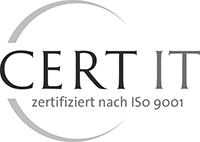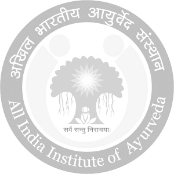Article by Kerstin Rosenberg, Ayurveda specialist, book author and head of training at the European Academy of Ayurveda.
The right nutrition for children has never been as important as it is today. Because of the many negative social and environmental influences, the list of widespread developmental disorders and disease patterns - such as hyperactivity, behavioural problems, asthma, neurodermatitis, ENT problems, obesity, allergies or concentration and sleep disorders - is long. To compensate for all this, children need above all a balanced diet with fresh food that is easily digestible and is eaten in a loving atmosphere with the family.
In this sense, parents not only take care of the physical well-being of their offspring, but also nourish the soul: From the moment of conception, the growing child reacts sensitively to the substantial and energetic state of health of mother and father: The healthier, more relaxed and happier the parents were at conception, the more stable and resistant the constitution and health of the growing child will develop.
This is how the classical Ayurvedic writings "Kaumarabhrtya" describe it, in which the authors Caraka and Sushruta have dedicated a separate chapter to child nutrition. Here they recommend easily digestible foods that do not increase Kapha (phlegm) and increase Ojas (vital energy). This characteristic is especially found in the combination of milk and cereals with restorative spices and herbs - such as saffron, fennel seeds or dried amla fruits. However, if the child suffers from ear, nose and throat problems or skin diseases, milk should be reduced and supplemented with soy or rice milk products.
Detrimental to any child is the consumption of yogurt, cheese, sausage, meat - especially in the evening and in combination with tomatoes or fruits. This has a particularly negative effect on the metabolism (Agni) and the circulatory system (Srotas) due to its blocking and slimy quality.
However, as our children today also suffer from many stress and environmental diseases, increased attention should also be paid to the psychological balance of the adolescent. Here, classical Ayurvedic pediatrics recommends a vegetarian diet with plenty of vegetables, grains, fruits, nuts, legumes and high-quality fats. Especially the sufficient supply of nourishing nutrients stabilizes the physical and emotional balance. This makes the regular consumption of lentil and bean stews, along with potatoes, cereals or bread, essential to a meat-free but wholesome child's diet.
Three steps for a healthy child diet
If we succeed in creating a diet without convenience products for the child, one of the most important Ayurvedic nutritional rules is already fulfilled: Food rich in vital substances, with staple foods from the region and free of preservatives, emulsifiers and flavor enhancers, provide the optimal basis for healthy growth and harmonious development.
The second step is to optimise the menu to suit the type of child. We consciously select the food and adjust it to the constitution (see table). This is especially necessary in case of an imbalance of the Doshas, i.e. in case of health problems such as a weak immune system, sleeping disorders or allergies (Vata), skin irritations or diarrhoea (Pitta) as well as overweight or ENT problems (Kapha).
The third step is slow integration of the general Ayurveda nutritional rules for a healthy metabolism. Here, the principles of regularity, moderation and awareness are especially important:
Eat at rest and chew well.
Our digestive system works best in a state of relaxation! Create a calm atmosphere at mealtime and help your child to take his meal in a balanced state of mind.
Give preference to cooked and home-cooked meals
Children need "home cooking" - well-cooked and home-prepared meals of organic quality, in which all the love of the mother (or father) can be felt and tasted. At least the main meals at lunch and dinner should be prepared hot.
Eat regularly and avoid snacks
Children should eat regular meals and avoid uncontrolled "in-between" eating. Few things are more beneficial to digestion. It is best not to eat again until the previous meal has been digested. This is the only way to avoid stressing the digestive and metabolic processes. Three main meals and two small snacks are optimal for children's metabolism.
The right amount
Children should only eat as much as their stomach can hold: The optimal amount per meal is about as much food mush as fits in two palms.
Do not drink at mealtimes
To avoid unnecessarily weakening the digestive fire, a maximum of one cup of warm tea or one glass of water should be drunk with meals.
Take fresh fruits and milk alone
Fresh fruits and untreated cow's milk are among the most important sources of energy and nutrients in Ayurvedic child nutrition. However, in order to metabolize them optimally, it is necessary to always take them alone - for example as a snack. It is very wholesome to anchor a fruit meal in the morning and a warm milk in the evening before going to bed firmly in the daily menu.
Nutrition and health recommendations for Dosha balance in children
| Dosha dominance | To recommend (Pathya) | To be avoided (Apathya) |
| For healthy children and for Vata balance (especially in case of restlessness, nervousness, sleep disorders or a weak immune system) | Goat's or cow's milk, warm cereal porridge, barley, wheat, ghee, rice, nuts, mungdal, sugarcane products, pumpkin, potatoes, carrots, grapes, raisins, almonds, coconut, licorice, cinnamon, asafoetida, ginger, cumin | Hard to digest food, irregular diet, incompatible food, fatty, sour, spicy or irritating food, constant eating, suppression of excretory reflexes (vega- samdhara). |
| Nutrition for children with increased Kapha (especially with mucus, overweight, sluggishness and motor underdevelopment) | Goat's milk (diluted) with ginger, cereal porridge, rye bread, barley, honey (only from the 1st year of life), cardamom, cinnamon | Oat milk porridge, sweets, sugar, fermented foods, e.g. with yeast, fried foods, bananas, yoghurt, cheese, curd cheese, ice cream, ready-made products, raw vegetables, tomato concentrate, cold food and drinks, sour fruit or fruit juices |
| Diet for children with increased Pitta (especially skin irritations and diseases, diarrhoea, heat and aggression) | Goat's milk, wheat, barley, ice cream in small quantities, raw vegetables, sweet fruits and vegetables such as carrots, beetroot, green vegetables such as spinach, lettuce, desserts such as puddings with saffron and cardamom, pure marzipan, wholemeal biscuits sweetened with honey or cane sugar | sour, fatty and spicy red meat, eggs, tomato concentrate, cheese, yoghurt, curd cheese, sour fruit or fruit juices, fermented foods, fried foods (chips, crisps), industrial sweets with chemical additives or nut chocolate bars |











